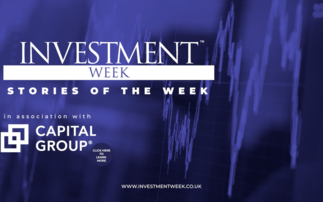
Regulatory tightening has hurt Chinese equities in 2021
Chinese equities have had a tough year so far. It all started well. Early in 2021, there was optimism abound thanks to a faster-than-expected economic recovery at home and the anticipation of the Covid vaccine rollout in China's most important trading partners. By mid-February, Chinese equities had rallied some 20%, outpacing global markets by 14% in less than two month. Fast forward to November, and the fortunes have reversed. The Chinese index is now down 11%, whereas global stocks are up by almost a fifth.1
Broad Diversification can help reduce idiosyncratic risks
There are a number of factors that have contributed to the underperformance of Chinese equities. Most of these come under the sweeping regulatory changes that are currently affecting the Chinese economy and society at large and are aimed at improving national security, reducing inequality, and fostering a sustainable future. We believe that regulatory cycles are part and parcel of investing in emerging markets in general, and in China in particular. The reforms and sanctions indeed have a goal in mind that may bode well for financial markets in the long run.
Short-term volatility, as we have been witnessing for the better part of the year, is the price to pay. While there is no indication that the current cycle is at its end, markets have stabilised somewhat since the late summer. Investors have been rattled by the targeted state interventions in certain sectors and resulting idiosyncratic risks. But those that have a positive long-term view of the country and are able to accept bouts of volatility, could look to broadly diversified solutions. While some sectors and companies have seen their business model evaporate before their eyes (think AST - after school tutoring), other industries may have been caught up in the overall negative sentiment and may offer good value. One way to capture these opportunities could be through cost-efficient and broad passive investment solutions such as exchange traded funds (ETFs).
Volatility Spikes Have Historically Proven Long-term Buying Opportunities
Most markets have currently low volatility when compared to their long-term averages; China is one exception. China also seems attractive in terms of current price-earnings ratios (P/E) - with just under 11x it is trading 50% below developed markets and 15% below broad emerging markets.2 To an extent, the discount reflects the currently elevated risk, particularly in the tech sector that has been under siege in China, but it may not fairly reflect the longer-term growth prospects. Historically, volatility spikes have often proved long-term buying opportunities in China. Even though recent GDP growth numbers have disappointed, China remains on course to become the largest economy in the world within a decade. The secular shift from an export-oriented nation to a consumer-led economy is firmly intact. By 2022, China is expected to have a middle class exceeding 550 million people3 - that is more than the entire population of the EU and the UK combined.
Besides size, there is also quality that is playing an ever more important role. As poverty rates decline, Chinese consumers are steadily increasing their demand for higher-end, more expensive products. Many of these products are now developed, designed, and manufactured by Chinese companies. This in turn requires a better educated workforce that is also paid better.
Blue: FTSE China 30/18 Capped Net Index (09 Dec 2011 = 100), Green: smoothed annualized volatility (3 months), Dashed black: current smoothed ann. Volatility (3 months). Source: Bloomberg and own calculations.
The underrepresented giant
Given the economic and political clout that China projects on the world stage, the country is woefully underrepresented in many equity investors' portfolios. The increased inclusion of A-shares (mainland China) in major indices since 2019 has improved the situation, but China exposure in global benchmarks remains stuck in the low- to mid-single digits. While there are questions around access and risk appetite that are reasons for this underrepresentation, long-term investors may want to consider setbacks as an opportunity to increase their positions. Consider this: The market-cap-to-GDP ratio of the US is around 1.9x. The ratio of China stands at 0.8x (CEIC Data, 2020).4
A typical emerging markets strategy may not be the most appropriate solution to increase Chinese equity exposure of the overall portfolio; while China makes up nearly 40% of the FTSE Emerging Index, an investor would still add 60 cents on the dollar to countries that, in some cases, have completely different risk-return profiles.5 For what tends to be a relatively small bucket for most investors, the easiest and most cost-efficient way to add to existing exposure could be a dedicated single country ETF on China. To best capture the entirety of the country and be truly diversified, it should include a broad set of share classes as well as large and mid-caps from across different sectors.
The Franklin FTSE China UCITS ETF offers such an exposure to an index of roughly 1,000 stocks. The underlying index has a broad coverage of Chinese share classes including A Shares, B Shares, H Shares, Red Chips, P Chips, S Chips and N Shares. Among the largest sectors are consumer discretionary companies, tapping into the long-term story of an economy shifting to consumption-based growth. The annual TER of the UCITS ETF is 0.19%.
This post was funded by Franklin Templeton
Endnotes
1. All performance data refer to respective FTSE indices. 2. Bloomberg 3. McKinsey 4. CEIC Data 5. FTSE Russell
What are they key risks?
The value of shares in the Fund and income received from it can go down as well as up and investors may not get back the full amount invested.
Performance may also be affected by currency fluctuations. Currency fluctuations may affect the value of overseas investments.
There is no guarantee that the Fund will meet its objective.
The fund invests mainly in green bonds whilst aiming to maintain capital preservation. Such securities have historically proven to present some stability over time and have benefitted from limited exposure to interest rates and movements in the bond market. As a result the performance of the fund can fluctuate moderately over time.
Other significant risks include: Counterparty risk: the risk of failure of financial institutions or agents (when serving as a counterparty to financial contracts) to perform their obligations, whether due to insolvency, bankruptcy or other causes. Credit risk: the risk of loss arising from default that may occur if an issuer fails to make principal or interest payments when due. This risk is higher if the Fund holds low-rated, sub-investment-grade securities. Foreign Currency risk: the risk of loss arising from exchange-rate fluctuations or due to exchange control regulations. Secondary Market Trading risk: the risk that the shares purchased on the secondary market cannot usually be sold directly back to the Fund and that investors may therefore pay more than NAV per Share when buying shares or may receive less than the current NAV per Share when selling shares.
For full details of all the risks applicable to this Fund, please refer to the "Risk Considerations" section of the current prospectus of Franklin LibertyShares ICAV.
This material is intended to be of general interest only and should not be construed as individual investment advice or a recommendation or solicitation to buy, sell or hold any security or to adopt any investment strategy. It does not constitute legal or tax advice. Special risks are associated with foreign investing, including currency fluctuations, economic instability and political developments; investments in emerging markets involve heightened risks related to the same factors. To the extent the fund focuses on particular countries, regions, industries, sectors or types of investment from time to time, it may be subject to greater risks of adverse developments in such areas at focus than a fund that invests in a wider variety of countries, regions, industries, sectors or investments.
Franklin LibertyShares ICAV ("the ETF") investment returns and principal values will change with market conditions, and an investor may have a gain or a loss when they sell their shares. Please visit www.franklinresources.com for the Franklin LibertyShares ICAV's standardised and most recent month-end performance. There is no guarantee that any strategy will achieve its objective.
All performance data shown is in the fund's base currency. Performance data is based on the net asset value (NAV) of the ETF which may not be the same as the market price of the ETF. Individual shareholders may realise returns that are different to the NAV performance. Past performance is not an indicator or a guarantee of future performance. The actual costs vary depending on the executing custodian. In addition, deposit costs may be incurred which could have a negative effect on the value development. Please find out the costs due from the respective price lists from the processing/custodian bank. Changes in exchange rates could have positive or negative effects on the development in Euro. Please visit www.franklinresources.com for current performance and see the prospectus for further details. Information is historical and may not reflect current or future portfolio characteristics. All portfolio holdings are subject to change.
An investment in Franklin LibertyShares ICAV entails risks which are described in the prospectus and in the relevant Key Investor Information Document.
Franklin LibertyShares ICAV (domiciled outside of the U.S. or Canada) may not be directly or indirectly offered or sold to residents of the United States of America or Canada. ETFs trade like stocks, fluctuate in market value and may trade at prices above or below the ETFs net asset value. Brokerage commissions and ETF expenses will reduce returns.
Find out now about the opportunities associated with investing in our funds opportunities and risks: www.franklintempleton.co.uk. Sales brochures and other documents are available free of charge from Franklin Templeton Investment Management Limited (FTIML), Cannon Place, 78 Cannon Street, London EC4N 6HL, Tel: +44 (0) 20 7073 8500, franklintempleton.co.uk.
© 2021 Franklin Templeton. All rights reserved.













